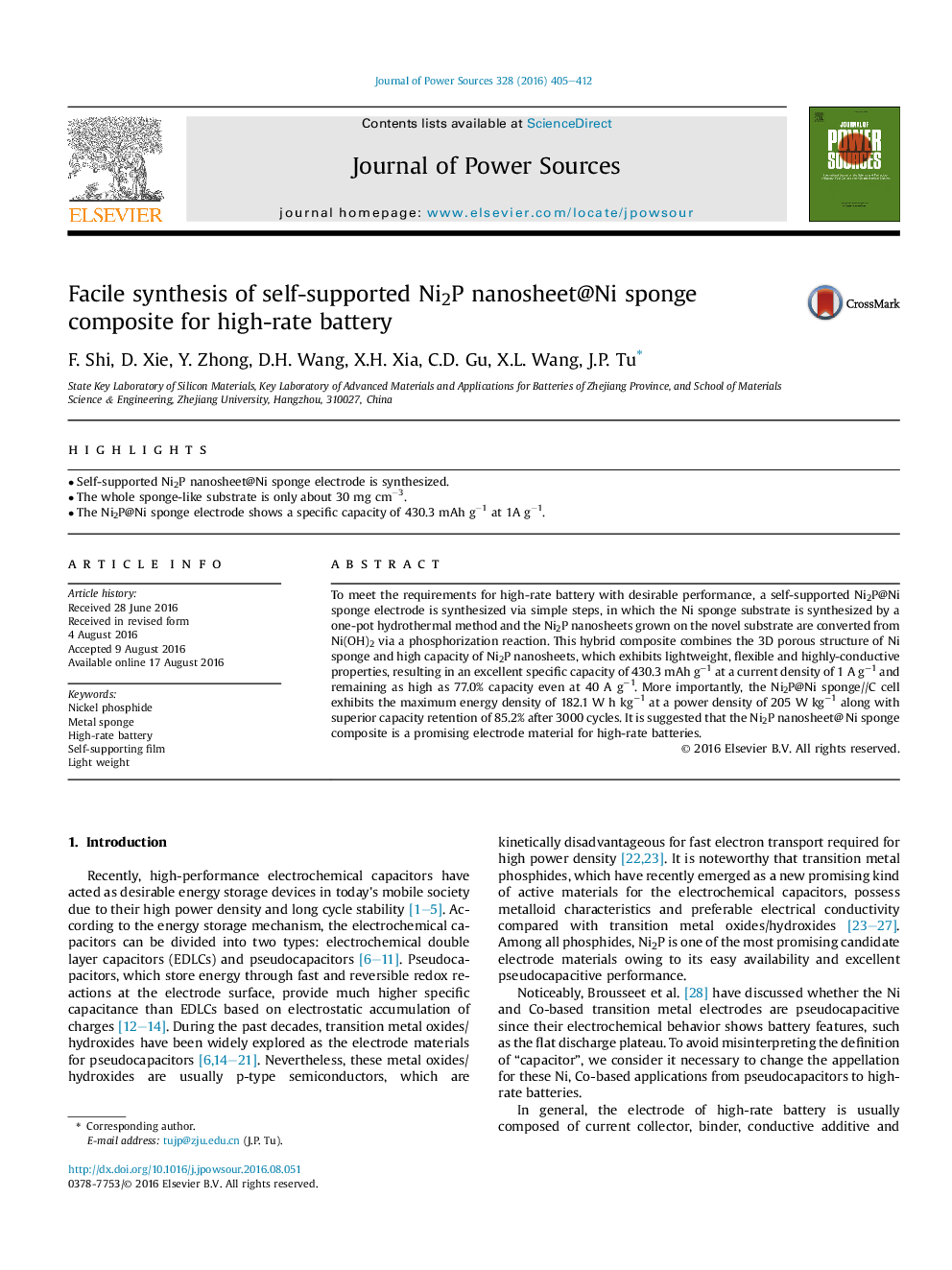| Article ID | Journal | Published Year | Pages | File Type |
|---|---|---|---|---|
| 7727198 | Journal of Power Sources | 2016 | 8 Pages |
Abstract
To meet the requirements for high-rate battery with desirable performance, a self-supported Ni2P@Ni sponge electrode is synthesized via simple steps, in which the Ni sponge substrate is synthesized by a one-pot hydrothermal method and the Ni2P nanosheets grown on the novel substrate are converted from Ni(OH)2 via a phosphorization reaction. This hybrid composite combines the 3D porous structure of Ni sponge and high capacity of Ni2P nanosheets, which exhibits lightweight, flexible and highly-conductive properties, resulting in an excellent specific capacity of 430.3 mAh gâ1 at a current density of 1 A gâ1 and remaining as high as 77.0% capacity even at 40 A gâ1. More importantly, the Ni2P@Ni sponge//C cell exhibits the maximum energy density of 182.1 W h kgâ1 at a power density of 205 W kgâ1 along with superior capacity retention of 85.2% after 3000 cycles. It is suggested that the Ni2P nanosheet@ Ni sponge composite is a promising electrode material for high-rate batteries.
Keywords
Related Topics
Physical Sciences and Engineering
Chemistry
Electrochemistry
Authors
F. Shi, D. Xie, Y. Zhong, D.H. Wang, X.H. Xia, C.D. Gu, X.L. Wang, J.P. Tu,
